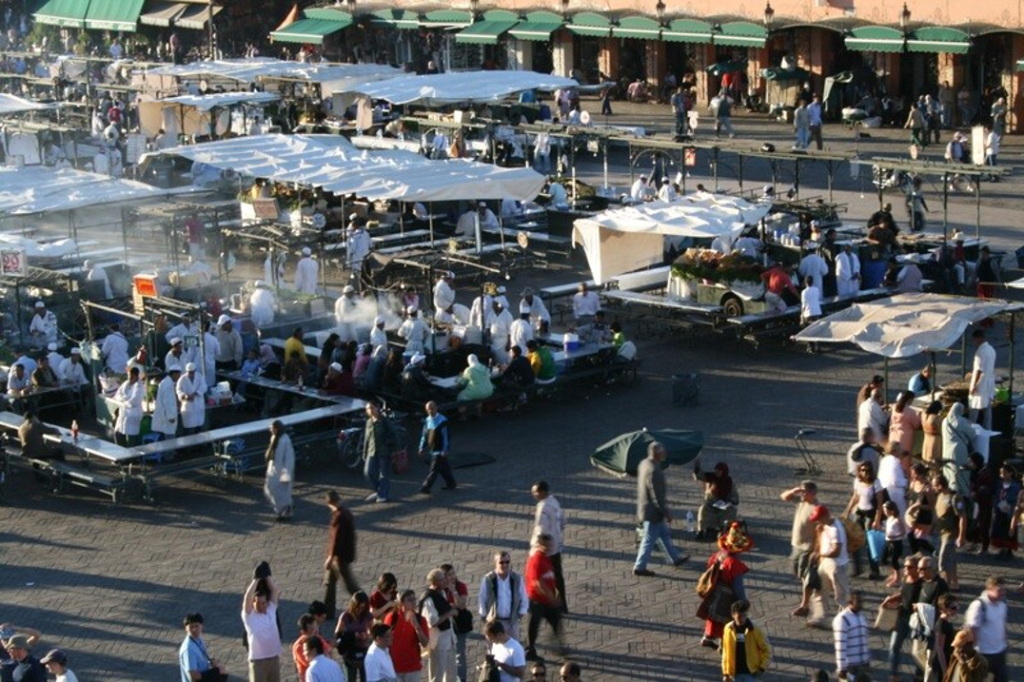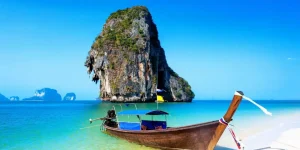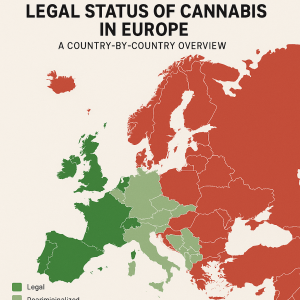f you are planning a trip to Marrakech, Morocco, this guide is ideal to start, as I tell you which are the 8 places you should not miss and how to do it cheaply.
The fourth most populated city in Morocco is the number one in terms of tourism. Its proximity to Spain means that many people from the neighboring country cross the Strait of Gibraltar to visit it, but its popularity is not just a matter of geography.
Its mythical medina (old part) with the huge Djemaa El-Fna square, its mosques with high minarets from where you can hear the call to prayer, its markets, its gastronomy, and its location between the Atlas Mountains and the desert, are some of the reasons that attract so many travelers. Morocco Tours 8 days
Let’s know the 8 places you should not miss on your trip to Marrakech:
What to do in Marrakech, Morocco
Marrakech is divided into two main parts: the medina, which is the old and most interesting part in terms of tourism; and the modern part (Guéliz or Ville Nouvelle). Everything you saw in tourist promotion photos and that surely made you want to visit it, is in the medina.
Something I have to warn you if it is your first time in Morocco, is that tourist scams are a constant. Being the most popular destination in the country, there are many who want to make money by cheating visitors, and unfortunately there are also many who fall, not used to these attitudes in their countries.
With this I do not want to say that you should be suspicious of all Marrakech, but be alert and do not believe those who approach you to talk in a too “friendly” way in the tourist areas, nor be intimidated by aggressive sellers. Also, before buying or booking a tour, look for a price and bargain, because that is what is expected.
Be sure to read: Everything you should know before traveling alone to Morocco.
1. Djemaa El-Fna
It is the heart of the medina of Marrakech and the largest traditional square in Morocco.
From dusk to night is when the square comes to a boil, filling with food stalls and all kinds of street shows, such as storytellers (in Berber or Arabic), magicians, musicians and dancers. Of course, any photo or video you take will be followed by a request for money.
To have a good experience looking for a place to dine, avoid places that hire extremely insistent people, who chase you with shouts trying to get you to eat at their place. Rather stay away from these and look for the quiet ones, with a written price list, and whenever they bring you to the table something you did not order, ask if it is included because they will charge you for it later.
2. The souk
The souk (“suuq” in Arabic) is the historic market of Marrakech, which starting in Djemaa El-Fna square and extending for several kilometers, forms a huge roofed labyrinth where they sell everything from the most colorful spices to gold jewelry.
My recommendation is that you take it as a stroll to see one of the most vibrant markets in the world, but if you want to buy better do it elsewhere because prices are quite inflated for tourists and you will have to bargain too much, although without reaching the levels of the Khan El-Khalili market in Cairo.
To see it at its peak of action, it is best to visit it in the morning.
3. Koutoubia Mosque
Following the walk through the medina, we approached that tall minaret that can be seen from almost everywhere, and that five times a day warns Muslims that prayer time has arrived.
The Koutoubia Mosque (or Kutubiyya) is the largest mosque in the city and one of Morocco’s several World Heritage Sites. The current structure dates from 1158, and its famous minaret, which served as inspiration for the Giralda of the Cathedral of Seville, dates from 1195.
The bad news is that only Muslims can enter the mosque, but at least you will be able to see the gardens. The most you will be able to see of the interior if you are not going to pray, is from the outside when the doors open on Fridays, which is the day of greatest congregation as it is the most important day of the week for Islam.
4. Saadi Tombs
Sultan Ahmad al-Mansur wanted earthly luxuries to accompany him when he left this life, so his resting place had to resemble his grandiose palace. So he commissioned the construction of this lavish necropolis during his reign (1578-1603), where in addition to his own, among the hundreds of tombs are those of his mother, his first son, his wife and grandchildren.
With the fall of the Saadi dynasty, the entrance was walled up so that no one would have access and they were forgotten, but they did not destroy or loot them as they did with the palaces, perhaps for reasons of superstition. The complex was rediscovered only in 1917, and after a long reconstruction work it was opened to the public.
The decoration of the mausoleums, where the central hall with twelve Carrara marble columns and the detailed entrance arches stand out, make it one of the best examples of Moroccan architecture. Viajes a Marrakech
5. Bahia Palace
Although in English it is also known as Bahia Palace, its name has nothing to do with the geographical location, but “bahia” means brilliant in Arabic, and it is believed that al-Bahia (the brilliant) was the name of the favorite wife of Ba Ahmed, who expanded the palace started by his father Si Musa in 1859.
The intricate decoration and design details of the rooms, with Arabic inscriptions, geometric figures and arabesques, are exquisite, but it is undoubtedly the central courtyard, of 1500 m² with Carrara marble floor, the great star.
Although the space open to the public is very large, only a part of this huge palace of 8 hectares and 150 rooms is open to the public.
6. Jardin Majorelle
If you need to get out of the alleys of the medina for a while, this private garden owned by French designer Yves Saint Lauren is an excellent place.
It was bought in 1980 by YSL and his partner Pierre Bergé to open it to the public and preserve it as the French painter Majorelle -its original owner- had conceived it, exhibiting plant species from the five continents (it seems that cacti were his favorite).
In the center of the park is Majorelle’s former studio, an elegant building painted electric blue where the Berber Museum now operates.
Do not think that the Jardin Majorelle is an oasis of peace because you will be disappointed. In fact, it is one of the most visited places in Morocco. To avoid the crowds and long lines to get in, it is best to go as soon as it opens, at 8 AM. From Friday to Monday the ticket also includes admission to the gardens of the beautiful Villa Oasis, which was the house where Bergé lived until his death in 2017.
7. Experience a hammam
The experience of taking a “Turkish bath” in a hammam is one of those things you will never forget during a trip.
Scattered throughout the territories where the Muslim culture had or has influence, from Granada to Uzbekistan, the hammams are much more than saunas or spas where you go to take a bath with exfoliating massages, but are part of social life in this part of the world.
In Marrakech you will find from local hammams, where if you do not speak Arabic it is better to go with someone who can explain how it works, to those oriented to tourists, completely adapted to make your visit a total relaxation.
It is clear that prices vary depending on how real or how luxurious you want the experience, ranging from 20 dirham in the neighborhood (less than USD 2) to places like the luxurious Royal Mansour where treatments start at 1400 dirham (USD 130).
8. Get lost in the medina
As we were seeing, the medina is the place where you are likely to spend the most time, as it is the most colorful, picturesque and historic area of Marrakech.
Beyond the main tourist attractions that are in it, my favorite plan is to walk aimlessly, getting lost in the narrow streets, and the further you get away from the central square and the souk, the quieter you will be able to stroll.
Early morning is a beautiful time to walk around, when there is a lot of local commercial movement without so many foreigners, and therefore the insistent “tourist hunters” are not abundant. But the sunset is the most captivating moment of the day, when the walls take on reddish, pink and golden hues that make it magical.
How many days to spend in Marrakech?
It all depends on how much time you have available, but I would say that to be able to see at least the medina, with two full days (3 nights) you will have a good introduction.
If you have never been to Morocco or any Middle Eastern country, you will surely have thousands of questions and cultural doubts to solve, which will make you start planning your next trip as soon as you finish this one. Marrakech is for many the first contact with this culture.
For me the ideal is to spend at least a week, but I understand that you may not have that possibility. If budget is a barrier, there is a way to spend some time in Marrakech without paying for accommodation…
Enjoy Marrakech on a budget
If you are not in a hurry and want to live an experience that brings you much closer to the Moroccan culture, you can check out the volunteer opportunities in Marrakech through Worldpackers, such as helping out in this beautiful hostel located in a riad (traditional house with a central courtyard).
Besides allowing you to travel without paying for accommodation, since it is included as part of the exchange, being surrounded by local people you will be able to see places that tourists do not usually get to, and have more time to visit the city in depth.





